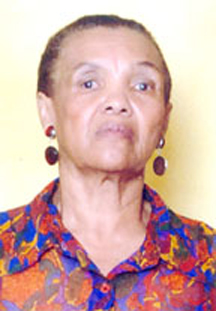Brothers Orwin and Cleon Hinds yesterday testified that they signed statements prepared by the police, only because they had been badly beaten by the lawmen, were in pain, and afraid.
They have both denied having anything to do with the murder of 72-year-old Clementine Fiedtkou-Parris.
The brothers were at the time leading their respective defences in unsworn testimonies from the prisoner’s dock at the close of the prosecution’s case.

Orwin and Cleon are jointly-indicted together with Kevin October and Roy Jacobs. The charge states that on June 30, 2011 they murdered Fiedtkou-Parris, pursuant to an arrangement whereby money was intended to pass from one person to another.
They have all pleaded not guilty to the indictment. October and Jacobs are expected to lead their defence and call witnesses, when the trial continues this morning. Orwin’s attorney, George Thomas, has also indicated that his client will be calling witnesses.
In his testimony, Cleon told the court that he was sitting in the vicinity of the Stabroek Market in October 2011, when he was approached by three police officers who told him that he was wanted at the police station.
Cleon said that upon his arrival at the station with the investigators, he was questioned by an officer whose name he gave as “Reid,” about the woman’s murder, but told the investigators, “I don’t know of any murder.”
According to Cleon, Reid then retrieved a sheet of paper from a desk drawer and began writing.
Cleon said that when the officer had finished writing, he instructed him to affix his signature to the document. The accused said he refused to sign the document, protesting that he did not know its contents and Reid instructed another officer, whom he identified as “Suesanker,” to “beat me.”
Cleon said that Suesanker then retrieved a device, also from a drawer, with which he began shocking him about the body. According to the accused, he could no longer take the blows meted out to him and decided to sign the document which Reid had written.
“I tell them I can’t tek it no mo, and then I sign the paper, cause the licks was too much fuh me,” Cleon said in a soft tone.
He was keen to add that prior to being arrested, he did not know his co-accused October and Jacobs. For his part, Orwin said he was heading home from work, also on October 31, 2011, when he was arrested by police and taken to the Criminal Investigation Department, Eve Leary, where the allegation of Fiedtkou-Parris’ murder was put to him.
“I tell them me aint know bout no murder allegation,” Orwin said, tightly holding a Bible with which he attends every court hearing.
He said that at this point, an officer whom he identified as “Serrabo,” began boxing him behind his ears.
This accused said that he also encountered Reid, who began speaking about the murder, while another officer recorded what he was saying on sheets of papers. When the officer had finished writing, Orwin said, Reid instructed him to sign the document.
The accused said that he refused to affix his signature and was hit in the head until he lost consciousness.
After he came to, “I tell them I gon sign the paper cause I din want them to beat me anymore. I sign the papers cause I was afraid,” he added.
According to his story, on the day of the murder, he was at a birthday lime with his girlfriend.
“I’m very innocent of this charge,” Orwin stressed. In his address to the court, the accused opined that the identification (ID) parade on which he was placed was “set-up” by the police, to have him picked-out.
The victim’ brother, Fitzroy Fiedtkou, who is now also deceased, was present when his sister was gunned down at her Robb Street home and had identified Jacobs and Orwin Hinds at an (ID) parade.
Thomas had questioned the integrity of the ID parade on which his client was placed.
Testifying also at yesterday’s hearing was Government Pathologist Dr Nehaul Singh, who give Fiedtkou-Parris’ cause of death as perforation of the aorta and lung, due to gunshot wounds.
Dr Singh explained that of the three gunshot wounds which the woman’s body bore, the fatal one had struck and punctured one of her major blood vessels.
Responding to a question from Prosecutor Teshanna James-Lake, the pathologist said that because of the woman’s senior age, she would have succumbed within 5-10 minutes to the fatal shot since it damaged a major blood vessel causing “massive loss of blood.”





